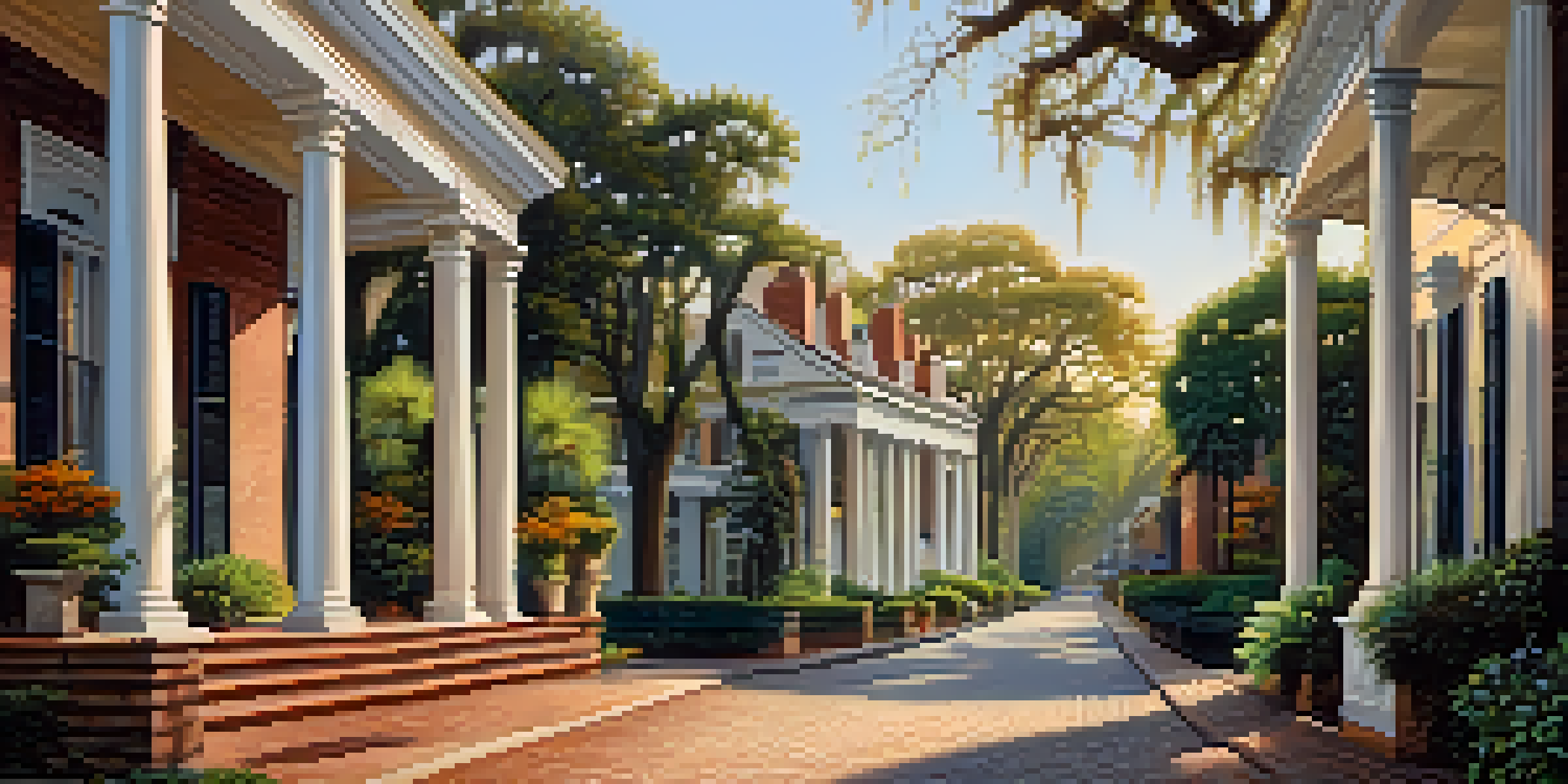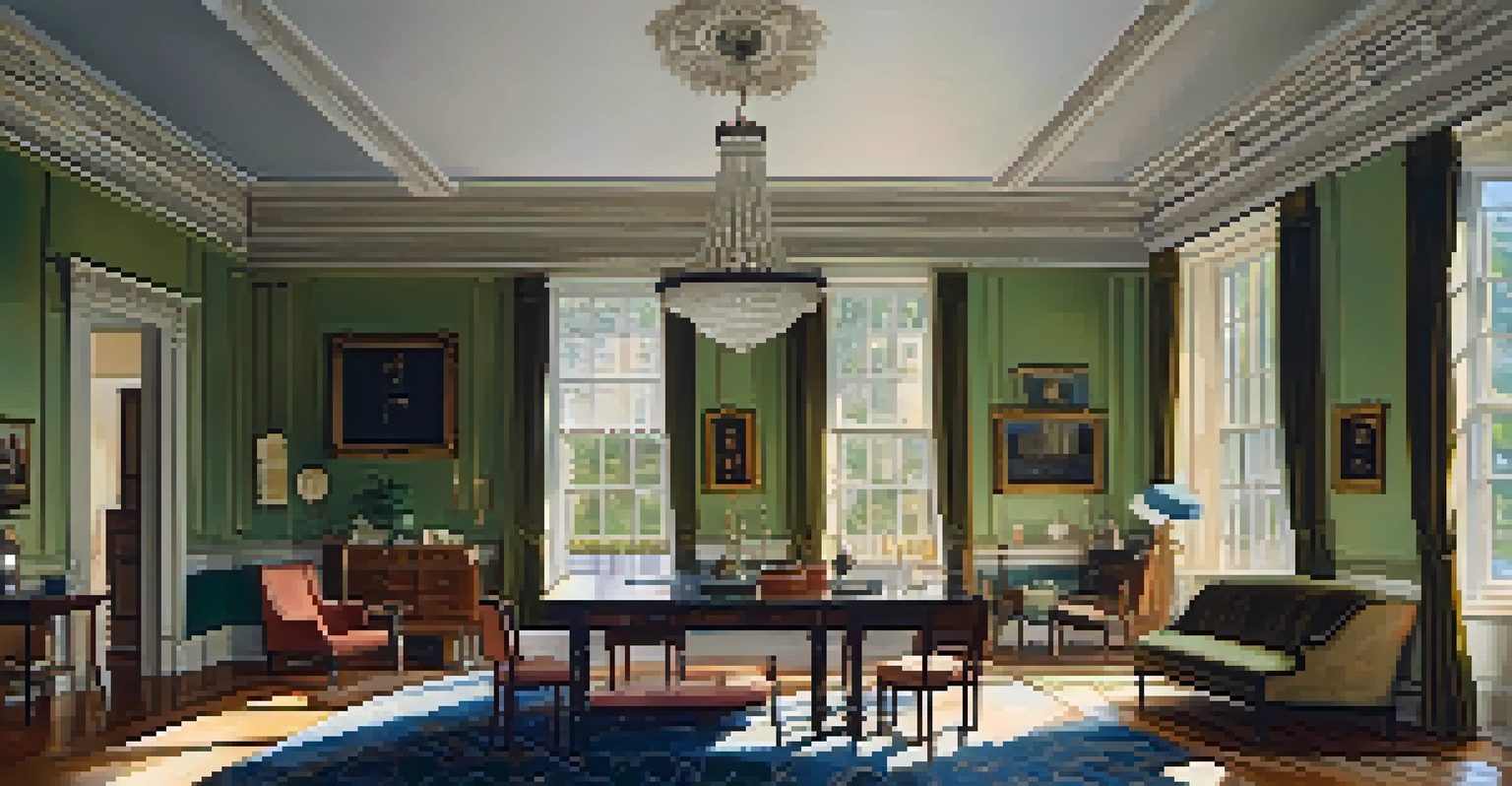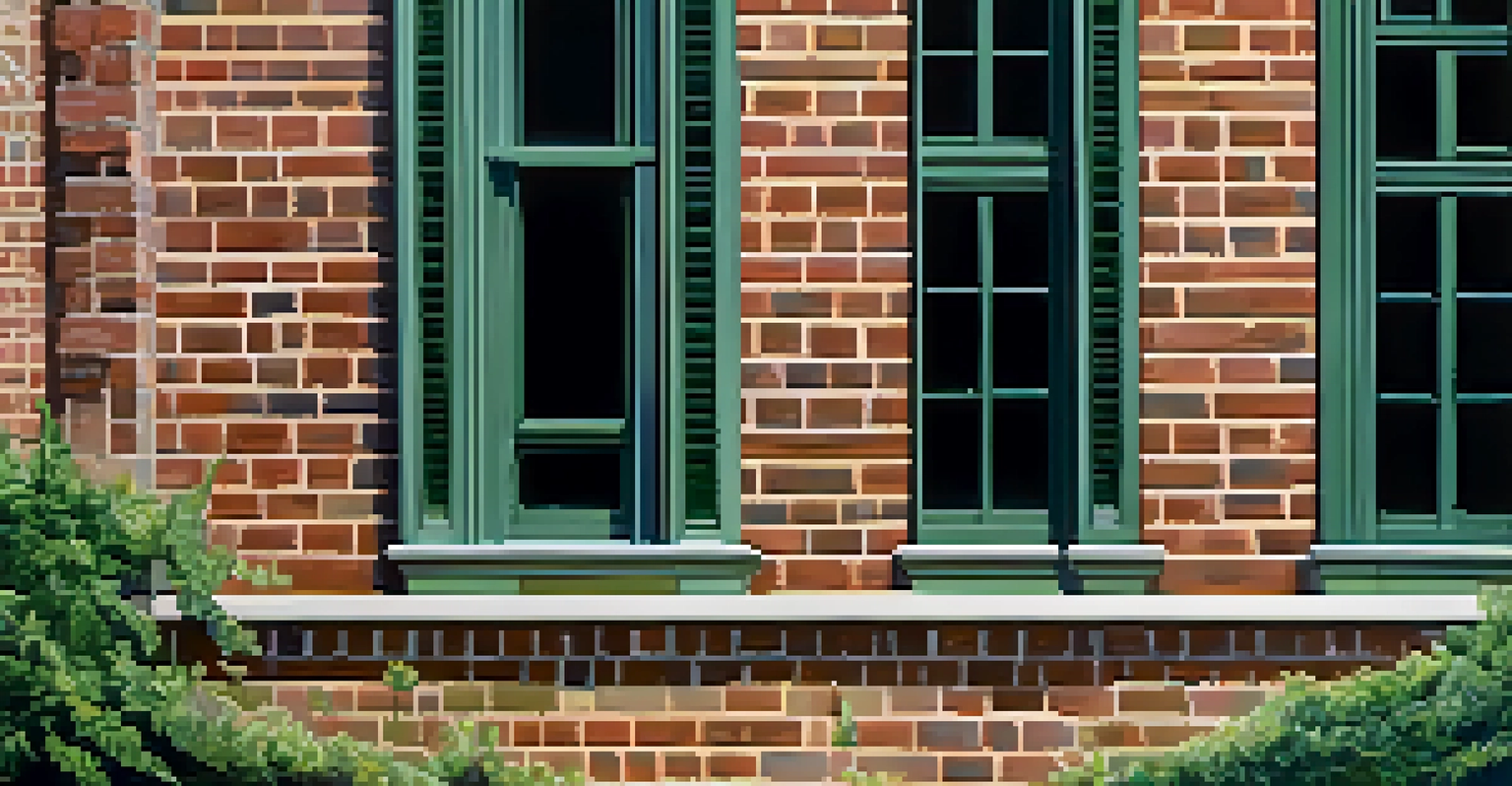Antebellum Architecture: Savannah's Timeless Treasures

Understanding Antebellum Architecture and Its Origins
Antebellum architecture refers to the style of buildings constructed in the southern United States prior to the Civil War. These structures reflect the social and economic conditions of the time, showcasing the wealth and aspirations of their owners. Savannah, with its strategic port location, became a hub for such architectural masterpieces, melding European influences with local materials.
Architecture is the art of how to waste space.
The term 'antebellum' literally means 'before the war,' and in the context of architecture, it encompasses various styles, including Greek Revival and Gothic Revival. These styles emphasize grandeur and symmetry, often featuring massive columns and elaborate facades. Savannah’s historic district boasts numerous examples that transport visitors back to a time of opulence and societal stratification.
As we delve into Savannah's antebellum architecture, we’ll discover not just the aesthetic beauty of these buildings but also the stories they tell about the people and culture of the time. Each home and public building serves as a window into the past, inviting us to reflect on both the triumphs and tribulations of its era.
Savannah's Historic District: A Walk Through Time
Savannah's Historic District is a treasure trove of antebellum architecture, where cobblestone streets lead you to stunning façades and lush squares. As you stroll through this picturesque area, it's easy to become enamored with the intricate details and historical significance of each structure. The district's layout, designed in the 18th century, is still intact, offering a glimpse into the past.

Among the standout buildings is the Owens-Thomas House, a prime example of Regency architecture that showcases intricate plasterwork and elegant design. The house's interior remains remarkably preserved, allowing visitors to experience life as it was in the early 1800s. Nearby, the Isaiah Davenport House highlights the craftsmanship of its time, with its stunning brickwork and period furnishings.
Antebellum Architecture Defined
Antebellum architecture in the southern U.S. showcases the wealth and social dynamics of the pre-Civil War era through styles like Greek Revival and Gothic Revival.
Each square in the Historic District tells its own story, featuring monuments and parks that celebrate Savannah's rich history. This delightful blend of nature and architecture creates an inviting atmosphere, encouraging exploration and appreciation of the city's antebellum treasures.
The Role of Architecture in Savannah's History
Architecture in Savannah is more than just aesthetics; it plays a crucial role in the city’s history and identity. The antebellum period was marked by economic growth, driven largely by the cotton industry, which influenced the design and construction of many homes. These buildings symbolize not only wealth but also the complex social dynamics of pre-Civil War Savannah.
A building has two lives. The one it lives and the one it imagines. The one imagined is more important for history.
Many of the grand homes were designed to impress and showcase the prosperity of their owners, often incorporating elements from various architectural styles. This blend reflects the diverse cultural influences that shaped Savannah, from British colonial roots to emerging American styles. Each structure serves as a testament to the ambition and lifestyle of the antebellum elite.
As we examine Savannah's architectural landscape, we uncover the implications of these designs on the city's social fabric. The homes and public buildings are not just physical spaces; they are reminders of a tumultuous time, marked by both grandeur and the human cost of prosperity.
Key Examples of Antebellum Architecture in Savannah
When discussing antebellum architecture in Savannah, several key structures stand out as iconic representations of this period. The Mercer-Williams House is perhaps one of the most famous, known for its stunning interiors and tragic history that has captivated visitors for decades. Its intricate design and lush garden reflect the sophistication of its original owner, James Williams.
Another notable example is the Juliette Gordon Low Birthplace, which showcases the Federal style and is significant not just for its architecture but also for its connection to the founder of the Girl Scouts. This structure, with its elegant lines and historical importance, embodies the spirit of Savannah during the antebellum period.
Savannah's Historic District Highlights
Savannah's Historic District features stunning antebellum structures, each with unique stories, inviting exploration of the city's rich architectural heritage.
Lastly, the Green-Meldrim House features elements of Gothic Revival and is often considered one of the finest examples of its style in the city. Its detailed craftsmanship and beautiful gardens add to its charm, making it a must-visit for those interested in Savannah's architectural heritage.
Preservation Efforts and Their Importance
Preserving Savannah's antebellum architecture is vital for maintaining the city's historical integrity and cultural identity. Various organizations, including the Historic Savannah Foundation, work tirelessly to protect and restore these architectural gems. Their efforts ensure that future generations can appreciate the beauty and significance of these structures.
Preservation not only involves maintaining the physical buildings but also educating the public about their historical context. Through guided tours and community events, these organizations foster a deeper understanding of Savannah's past, allowing visitors to connect with the stories behind the architecture. This awareness is crucial for instilling a sense of pride and responsibility toward the city's heritage.
Moreover, the preservation of antebellum architecture contributes to the local economy by attracting tourists interested in history and culture. The financial support from tourism helps sustain these initiatives, creating a positive feedback loop that benefits both the community and the preservation of its architectural treasures.
The Influence of Antebellum Architecture on Modern Design
Antebellum architecture has left a lasting mark on modern design, influencing everything from residential homes to commercial buildings. Many contemporary architects draw inspiration from the grandeur and elegance of these historic structures, seeking to capture their timeless beauty in new projects. This fusion of old and new creates a unique architectural dialogue that enriches the urban landscape.
Architectural elements such as tall columns, expansive porches, and intricate moldings are often incorporated into modern designs, reflecting a desire to evoke the charm of the past while accommodating contemporary lifestyles. This trend not only preserves the aesthetic appeal of antebellum architecture but also keeps its legacy alive in today’s world.
Preservation Efforts Matter
Preserving Savannah's antebellum architecture is essential for maintaining cultural identity, educating the public, and supporting local tourism.
Moreover, this influence extends beyond physical structures; it also encompasses the way communities engage with their architectural heritage. By embracing the principles of antebellum design, modern developments can foster a sense of place and continuity, bridging the gap between history and the present.
Visiting Savannah: A Journey Through Antebellum History
Visiting Savannah offers a unique opportunity to experience antebellum architecture firsthand, immersing yourself in the rich history that permeates the city. As you wander through the Historic District, each building invites you to explore its story, providing a tangible connection to the past. Guided tours, whether on foot or by carriage, can enhance your understanding and appreciation of the architectural gems that define Savannah.
Don't miss the chance to visit museums and historical homes that offer insights into the lives of those who inhabited these beautiful spaces. Many locations host special events and reenactments that bring the antebellum period to life, engaging visitors in a way that textbooks cannot. This interactive experience makes history feel relevant and accessible.

In addition to the architectural wonders, the city's vibrant culture, delicious cuisine, and warm hospitality make Savannah a memorable destination. Whether you're an architecture enthusiast or simply looking to soak in the charm of the South, Savannah's antebellum treasures promise a journey that is both enriching and enjoyable.